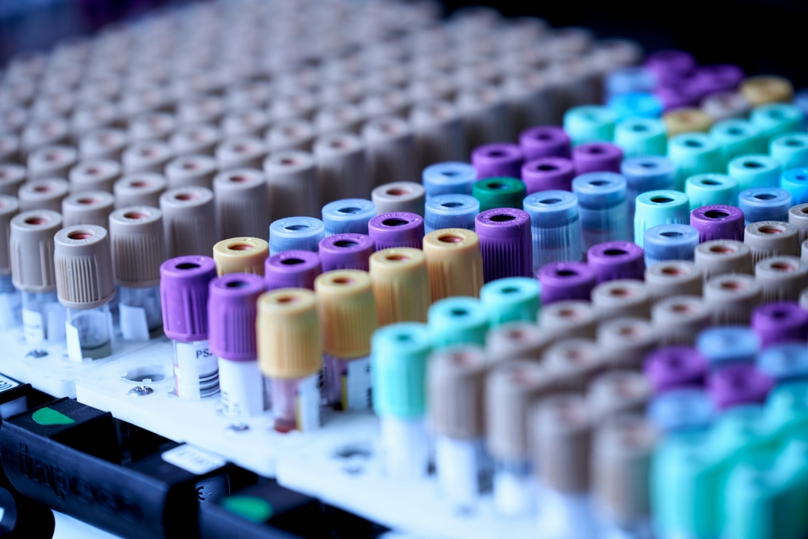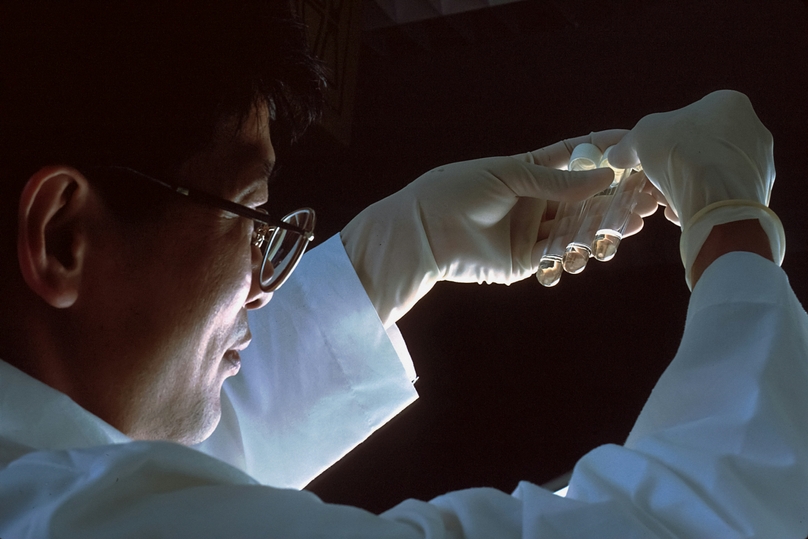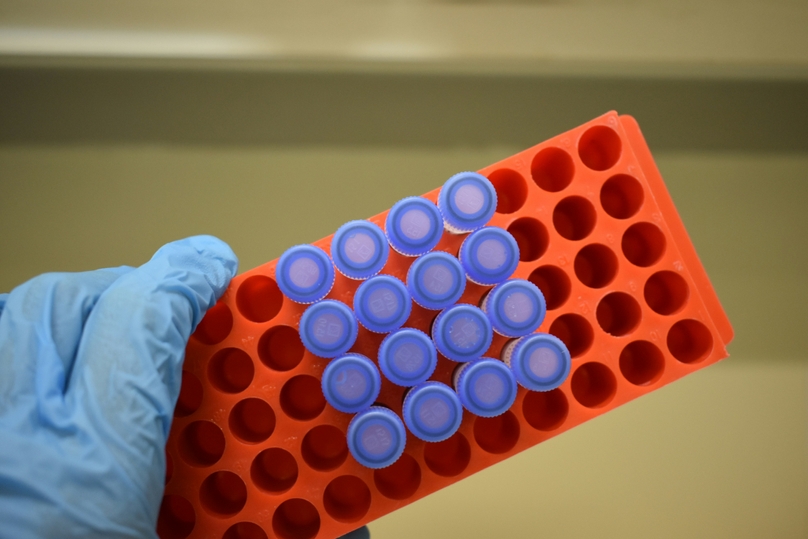Sample management is a part of laboratory workflow that includes sample selection, proper storage, and efficient retrieval of useful samples. In biopharmaceutical laboratories, a well-structured sample management system serves as the foundation for accuracy and reliability, ensuring that research outcomes remain precise and trustworthy. Since sample data directly influences safety and efficacy decisions, any discrepancies in data can compromise research outcomes, and in the worst-case scenario, faulty data can lead to the approval of drugs that pose risks to patient health and safety. So, the proper management of biological samples is a cornerstone of effective biopharma operations, influencing everything from early-stage research to commercial production.
As the biopharma industry evolves with increasingly complex modalities and stringent regulations, robust sample handling systems are essential for safeguarding research integrity, enhancing operational efficiency, and ensuring regulatory compliance. However, with these growing demands come significant challenges.
Hurdles that biopharma laboratories face in sample management.
The biopharmaceutical industry today handles an unprecedented variety of sample types, including those from humans, animals, plants, chemicals, and manmade substances—each with unique processing needs. The rise of new therapies, such as cell and gene treatments, adds further complexity, as these sensitive materials require strict temperature and environmental control.
A major challenge in sample management is maintaining data integrity. Mishandled samples can produce inaccurate test results, leading to misleading or false conclusions that may impact research and decision-making.
Poor sample management creates operational inefficiencies and financial burdens. When samples are lost, or wrongly labeled, organizations frequently have to repeat tests in clinical trials. This raises workload, lengthens deadlines, and inflates costs—especially troublesome for personalized medicine trials because each sample is both crucial and expensive.
Without proper tracking of samples, issues may go unnoticed for too long, disrupting biopharmaceutical research timelines and wasting resources.
Failure to maintain a proper chain of custody of samples can lead to regulatory scrutiny and compliance issues. In clinical trials, it is crucial to follow study guidelines and regulatory requirements to ensure data integrity and approval.
Manual data entry is prone to human mistake, which can result in inaccurate sample information and cause delays. These challenges get worse when different teams utilize distinct systems for sample management, resulting in inefficiencies and communication breakdowns.
The key to overcoming these challenges is using sample management software systems, which can play a vital role in biopharmaceutical research laboratory by increasing sample monitoring and integrity across all research stages, including cell and gene therapies. New integrated platforms, such as Genemod, are transforming this process by offering a systematic approach that improves accuracy and productivity in biopharmaceutical labs. It promotes sample integrity by optimizing procedures and decreasing manual errors. Genemod also smoothly integrates sample management with other critical lab operations including digital lab notebooks, order management, and consumables monitoring, resulting in a more connected and efficient biopharmaceutical research environment.
Take a look at the Best practices to optimize your biopharmaceutical lab efficiently.
Standardizing Naming Conventions and Metadata
In sample management, using unique identities that are consistent across departments is a crucial step. According to the Global Bioanalysis Consortium (GBC), labels should contain accession numbers, protocol numbers, visit times, subject/animal IDs, and sample types in order to facilitate traceability. Labels created by hand should be replaced with printed IDs generated by laboratory information management systems (LIMS) since handwritten labels might be ambiguous and degrade over time. Beyond basic identification, metadata standardization enhances sample integrity by incorporating critical details like anticoagulant types, light sensitivity needs, and stabilization protocols. For instance, when handling blood samples, metadata standardization would include not only the sample ID and protocol number but also information such as the type of anticoagulant used (e.g., heparin), whether the sample need to be kept in the dark because of light sensitivity, and the precise stabilization protocol needed to maintain the sample's integrity during transport.
Implementing Barcode-Based Tracking Systems
In biopharmaceutical lab environments, manually recording samples takes a lot of time and increases the possibility of mistakes, taking important time away from important research. For example, a high-volume diagnostics lab that processes hundreds of patient samples every week, may make mistakes if spreadsheets are used for manual tracking. There could be serious consequences from such mistakes, such as delays in patient diagnosis. Streamlining this procedure using a barcode-based sample tracking system improves dependability and efficiency. In clinical diagnostics workflows, barcode scanners linked to LIMS can update sample status in real time as specimens move from centrifugation to aliquoting. By eliminating manual data entry and guaranteeing smooth tracking, researchers may concentrate more on scientific work and less on administrative duties, improving workflow and research results.
Define Storage Locations with Precision
Different biological samples require specific storage conditions to maintain their stability. The temperature and humidity of the storage environment are critical factors in maintaining their integrity. Damage can be avoided by monitoring and managing these situations with technology. Temperature, humidity, and other variables can be continuously monitored by automated devices, which can alert staff of any changes that can have an impact on samples. Real-time IoT sensors, integrated with Laboratory Information Management Systems (LIMS), provide continuous monitoring and trigger alerts when conditions go beyond safe limits. In order to maintain ideal storage conditions and guarantee sample quality and dependability, many systems can even automatically modify parameters.
Maintaining Audit-Ready Logs for Regulatory Compliance
Audit logs should keep track of all sample-related activities, including thaw cycles, door openings, and equipment calibrations. Frequent checks and audits assist in maintaining optimal storage conditions and identifying problems before they have any impact on samples. Audit trails must be safe, time-stamped, and kept for six to ten years, depending on the product's lifecycle, according to regulatory bodies like the FDA. To protect this data, encryption and role-based access controls ensure that only authorized personnel, such as quality assurance teams, can see or modify logs.
Cross-Departmental Staff Training Programs
Effective training programs concentrate on the particular requirements of various positions; for example, inventory managers can optimize freezer storage techniques, while hematology technicians can learn plasma processing techniques. According to Genemod's framework, assessment of skills should be conducted every three months to make sure employees are knowledgeable about emergency protocols, aseptic practices, and proper LIMS data entry.
Centralizing Access to Sample Data
Centralized LIMS solutions, like Genemod’s platform, allow real-time tracking of samples across different locations. Through the secure sharing of sample data, Genemod's cloud-based solution facilitates collaboration between researchers and institutions. This improves overall research efficiency by cutting down on redundant work and assisting teams in improving existing knowledge.
While these practices are essential for optimizing research laboratories, modern biopharmaceutical research now requires the integration of digital tools. Using cutting-edge digital solutions improves productivity, optimizes processes, and guarantees higher accuracy in laboratory operations.
To achieve long-term success, it is important to understand the key features of digital tools and adopt them effectively.
Let's explore the features of Digital Tools driving Optimization in biopharmaceutical sample management!
Cloud-Based Accessibility and Collaborative Workflows
In biopharma, analyzing large datasets—genomes, proteins, and interactions—requires high computing power, beyond standard desktops. Cloud platforms like Genemod’s LIMS/ELN integration ensures seamless, real-time teamwork, which enables global collaboration with secure storage and automated data sharing. AI tools reduce manual errors and speed up research.
Seamless Integration between Inventory & ELN
Genemod's platform seamlessly integrates inventory management with its Electronic Lab Notebook (ELN), connecting freezer inventories to experimental protocols and results. This unified system reduces data silos, enabling real-time tracking of samples and inventory levels. Through this integration, reordering is made easier, inventory levels and consumption are tracked, and real-time sample tracking is made possible. Consequently, necessary materials are always accessible, avoiding disruptions to research.
Real-Time Updates & User Permissions
The platform from Genemod provides real-time project dashboards with activity logs and protocol version histories, making it possible to track experiment progress and inventory changes instantly.
Customizable Workflows
Workflows that are customizable improve task management by eliminating redundancy and encouraging teamwork via centralized communication and real-time updates. Repetitive tasks can be automated to reduce errors and bottlenecks and increase productivity. This flexibility enables companies to react quickly to changes, encouraging scalability and ongoing progress.
Support for Regulatory Compliance
By automating procedures, lowering human error, and ensuring prompt adherence to regulations, digital tools improve regulatory compliance. By using advanced data analysis and templates to speed up reporting and audits, they increase the effectiveness of compliance management.
How Genemod is Revolutionizing Biopharma Sample Management?
Genemod's unified platform improves biopharma workflows by integrating inventory management, electronic lab notebooks (ELN), and sample tracking, creating a cohesive system that eliminates data silos. Within this system, barcode functionality offers accurate sample traceability, minimizing errors and improving accountability throughout the research process. Complementing this, location-based storage mapping visually organizes samples, replicating physical lab setups for intuitive and precise tracking. The platform uses version control and automated audit trails to promote regulatory compliance and preserve data integrity, giving a clear record of all activity. Furthermore, by providing cross-functional teams with customized access, role-based permissions enable safe communication while protecting confidential data and encouraging effective teamwork. Collectively, these features deliver a scalable, audit-ready sample management solution tailored to the complex demands of biopharma R&D.
Embrace Digital Transformation: Streamline Your Biopharma Sample Management with Genemod!
Relying on outdated sample management systems can lead to increased errors, inefficiencies, and compliance risks, ultimately escalating operational costs. Making the switch to scalable and adaptable systems like Genemod improves biopharma research's accuracy, efficiency, and teamwork. Embrace digital technologies to keep up with the changing biopharma landscape and optimize your sample handling processes.


















